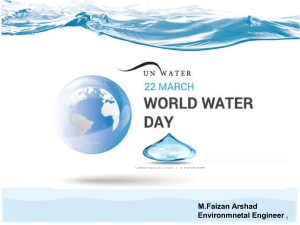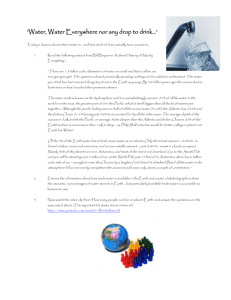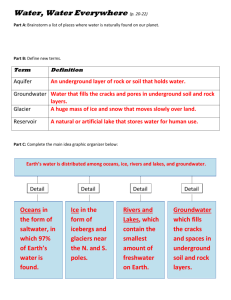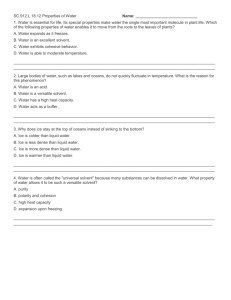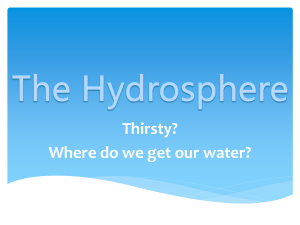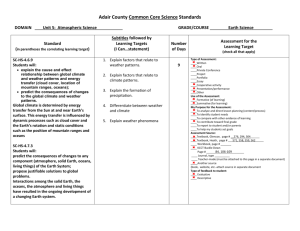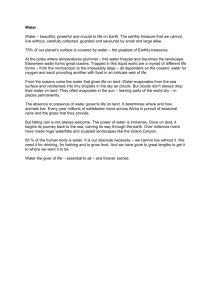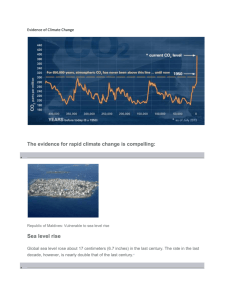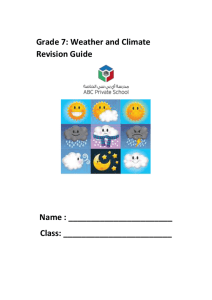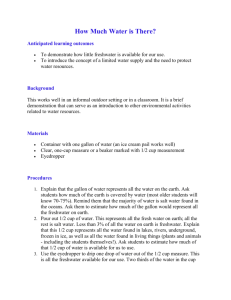Section 22.1 - CPO Science
advertisement
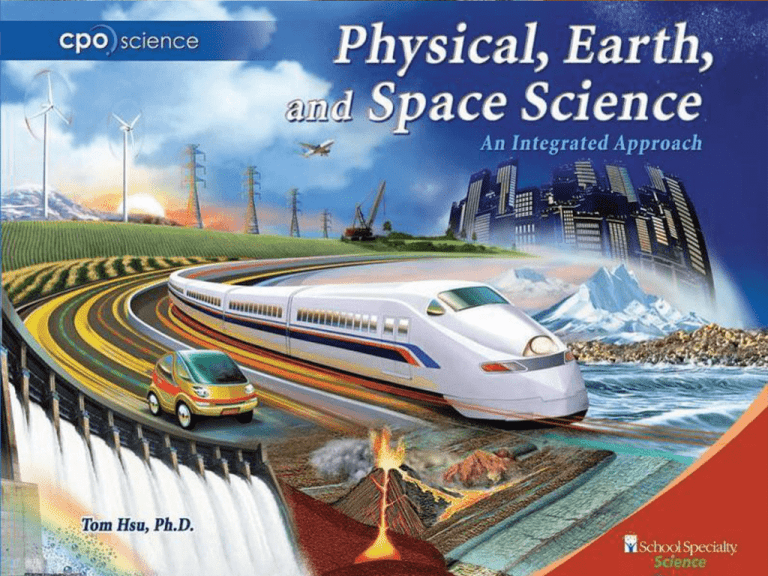
UNIT SEVEN: Earth’s Water Chapter 21 Water and Solutions Chapter 22 Water Systems Chapter 23 How Water Shapes the Land Chapter Twenty-Two: Water Systems 22.1 Water on Earth’s Surface 22.2 The Water Cycle 22.3 Oceans Chapter 22.1 Learning Goals Identify places where water is found on Earth. Contrast the distribution of freshwater and saltwater. Discuss the many beneficial uses of water. Investigation 2B Modeling a River Key Question: Which variables affect the formation of a river? 22.1 Water on Earth’s surface About 70 percent of Earth’s surface is covered with water. This water is found in oceans, rivers, lakes, under the ground, and as ice. 22.1 The hydrosphere All the water on Earth is part of a large system called the hydrosphere. On Earth, water occurs in all three phases. 22.1 The distribution of water on Earth About 97% of Earth’s water is salt water found in oceans while 2% is frozen at the poles, leaving only 1% for human use. If all the water on Earth could fit into a one-liter bottle, only 10 milliliters would be fresh water. 22.1 Places where water is found Surface water on Earth refers to water that collects on the ground. This water includes oceans, lakes, rivers, streams, and reservoirs. A reservoir is a protected artificial or natural lake that is used to store water. 22.1 Places where water is found A glacier is a huge mass of ice that forms on land when snow and ice accumulate faster than they melt. Most of Earth’s fresh water is in the form of glacier ice. 22.1 Places where water is found Groundwater is water that collects under ground. Some of the water on Earth’s surface moves down through the soil to the water table (the upper level of underground water). 22.1 Water as a resource The temperature range on Earth’s surface is just right for water to exist in all three phases— liquid, solid, and gas. 22.1 Water as a resource One of the reasons why water is so useful is that it can dissolve many things. Over long periods of time, water dissolves and wears down rocks and mountains through processes called weathering and erosion. 22.1 Water as a resource The human body is 60% to 75% water. When you eat food, water in your body dissolves nutrients so they can be carried through your bloodstream.
